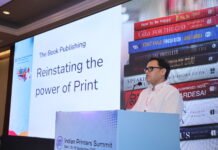According to some industry experts, the newspaper industry is witnessing an all-time low in circulation. However discouraging that may be, it is believed that the regional language newspapers from Southern India have been enjoying a commanding position in this space. For instance, The Times of India (ToI) surpasses all other major publications in terms of circulation in Bengaluru.
According to the Audit Bureau of Circulation (ABC), ToI stands well above the other known dailies in the south like Deccan Herald and The Hindu. ABC figures also suggest that TOI has gained a credible margin with a circulation of 4,88,486 copies in Bengaluru; the second and third position being held by Deccan Herald with 1,95,853 copies and The Hindu with 1,30,234 copies.
ToI launched its Bengaluru edition in the year 2003 with Bangalore Mirror; this was a time when The Hindu and Deccan Herald had a credible share in the southern market. The Bengaluru edition of ToI had its own share of success with a significant rise in ad revenue, which went to reach a position just below Mumbai and Delhi. Bengaluru as a city has seen wars for the top position in newsprint in the year 2007, during the launch of DNA. ToI realized the growing competition in Bengaluru, which led the company to buy Vijayananda Printers Limited (VPL) in December 2012, who had two newspapers then titled as Vijay Karnataka and Usha Kiran (both in Kannada language), and an English news daily Vijay Times. Bangalore Mirror was also relaunched in the year 2007—the same year that DNA was introduced—which added to the stiff competition in the Bengaluru market.
With inclusion of VPL, ToI added a bigger team, increasing its manpower and press. This enabled the group to obtain and gain a strong hold over South India (particularly Bengaluru), which is the third powerhouse for newsprint after Delhi and Mumbai. If we look at the global scenario, the growth graph of newspaper businesses in Asia is witnessing stagnancy. In this backdrop, this achievement of ToI will instill more confidence among the group members to attract even those readers who have so far been restricted only to the digital medium for news consumption.

















